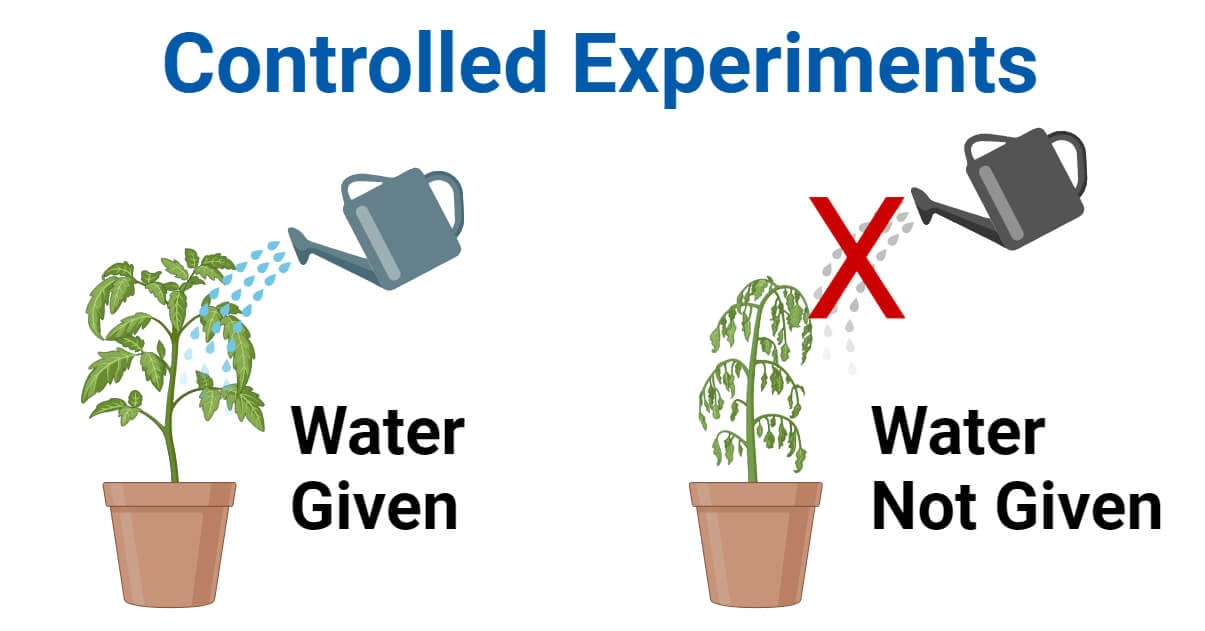Controlled experiments ensure valid and reliable results by minimizing biases and controlling variables effectively.
Rigorous planning, ethical considerations, and precise data analysis are vital for successful experiment execution and meaningful conclusions.
Real-world applications demonstrate the practical impact of controlled experiments, guiding informed decision-making in diverse domains.

Controlled experiments are the systematic research method where variables are intentionally manipulated and controlled to observe the effects of a particular phenomenon. It aims to isolate and measure the impact of specific variables, ensuring a more accurate causality assessment.
Interesting Science Videos
Importance of controlled experiments in various fields
Controlled experiments are significant across diverse fields, including science, psychology, economics, healthcare, and technology.
They provide a systematic approach to test hypotheses, establish cause-and-effect relationships, and validate the effectiveness of interventions or solutions.
Why Controlled Experiments Matter?
Validity and Reliability of Results
Controlled experiments uphold the gold standard for scientific validity and reliability. By meticulously controlling variables and conditions, researchers can attribute observed outcomes accurately to the independent variable being tested. This precision ensures that the findings can be replicated and are trustworthy.
Minimizing Biases and Confounding Variables
One of the core benefits of controlled experiments lies in their ability to minimize biases and confounding variables. Extraneous factors that could distort results are mitigated through careful control and randomization. This enables researchers to isolate the effects of the independent variable, leading to a more accurate understanding of causality.
Achieving Causal Inference
Controlled experiments provide a strong foundation for establishing causal relationships between variables. Researchers can confidently infer causation by manipulating specific variables and observing resulting changes. The capability informs decision-making, policy formulation, and advancements across various fields.
Planning a Controlled Experiment
Formulating Research Questions and Hypotheses
Formulating clear research questions and hypotheses is paramount at the outset of a controlled experiment. These inquiries guide the direction of the study, defining the variables of interest and setting the stage for structured experimentation.
Well-defined questions and hypotheses contribute to focused research and facilitate meaningful data collection.
Identifying Variables and Control Groups
Identifying and defining independent, dependent, and control variables is fundamental to experimental planning.
Precise identification ensures that the experiment is designed to isolate the effect of the independent variable while controlling for other influential factors. Establishing control groups allows for meaningful comparisons and robust analysis of the experimental outcomes.
Designing Experimental Procedures and Protocols
Careful design of experimental procedures and protocols is essential for a successful controlled experiment. The step involves outlining the methodology, data collection techniques, and the sequence of activities in the experiment.
A well-designed experiment is structured to maintain consistency, control, and accuracy throughout the study, thereby enhancing the validity and credibility of the results.
Conducting a Controlled Experiment
Randomization and Participant Selection
Randomization is a critical step in ensuring the fairness and validity of a controlled experiment. It involves assigning participants to different experimental conditions in a random and unbiased manner.
The selection of participants should accurately represent the target population, enhancing the results’ generalizability.
Data Collection Methods and Instruments
Selecting appropriate data collection methods and instruments is pivotal in gathering accurate and relevant data. Researchers often employ surveys, observations, interviews, or specialized tools to record and measure the variables of interest.
The chosen methods should align with the experiment’s objectives and provide reliable data for analysis.
Monitoring and Maintaining Experimental Conditions
Maintaining consistent and controlled experimental conditions throughout the study is essential. Regular monitoring helps ensure that variables remain constant and uncontaminated, reducing the risk of confounding factors.
Rigorous monitoring protocols and timely adjustments are crucial for the accuracy and reliability of the experiment.
Analysing Results and Drawing Conclusions
Data Analysis Techniques
Data analysis involves employing appropriate statistical and analytical techniques to process the collected data. This step helps derive meaningful insights, identify patterns, and draw valid conclusions.
Common techniques include regression analysis, t-tests, ANOVA, and more, tailored to the research design and data type.
Interpretation of Results
Interpreting the results entails understanding the statistical outcomes and their implications for the research objectives.
Researchers analyze patterns, trends, and relationships revealed by the data analysis to infer the experiment’s impact on the variables under study. Clear and accurate interpretation is crucial for deriving actionable insights.
Implications and Potential Applications
Identifying the broader implications and potential applications of the experiment’s results is fundamental. Researchers consider how the findings can inform decision-making, policy development, or further research.
Understanding the practical implications helps bridge the gap between theoretical insights and real-world application.
Common Challenges and Solutions
Addressing Ethical Considerations
Ethical challenges in controlled experiments include ensuring informed consent, protecting participants’ privacy, and minimizing harm.
Solutions involve thorough ethics reviews, transparent communication with participants, and implementing safeguards to uphold ethical standards throughout the experiment.
Dealing with Sample Size and Statistical Power
The sample size is crucial for achieving statistically significant results. Adequate sample sizes enhance the experiment’s power to detect meaningful effects accurately.
Statistical power analysis guides researchers in determining the optimal sample size for the experiment, minimizing the risk of type I and II errors.
Mitigating Unforeseen Variables
Unforeseen variables can introduce bias and affect the experiment’s validity. Researchers employ meticulous planning and robust control measures to minimize the impact of unforeseen variables.
Pre-testing and pilot studies help identify potential confounders, allowing researchers to adapt the experiment accordingly.
Conclusion
A controlled experiment involves meticulous planning, precise execution, and insightful analysis. Adhering to ethical standards, optimizing sample size, and adapting to unforeseen variables are key challenges that require thoughtful solutions.
Real-world applications showcase the transformative potential of controlled experiments across varied domains, emphasizing their indispensable role in evidence-based decision-making and progress.
References
- https://www.khanacademy.org/science/biology/intro-to-biology/science-of-biology/a/experiments-and-observations
- https://www.scribbr.com/methodology/controlled-experiment/
- https://link.springer.com/10.1007/978-1-4899-7687-1_891
- http://ai.stanford.edu/~ronnyk/GuideControlledExperiments.pdf
- https://www.ncbi.nlm.nih.gov/pmc/articles/PMC6776925/
- https://www.ncbi.nlm.nih.gov/pmc/articles/PMC4017459/
- https://www.merriam-webster.com/dictionary/controlled%20experiment
